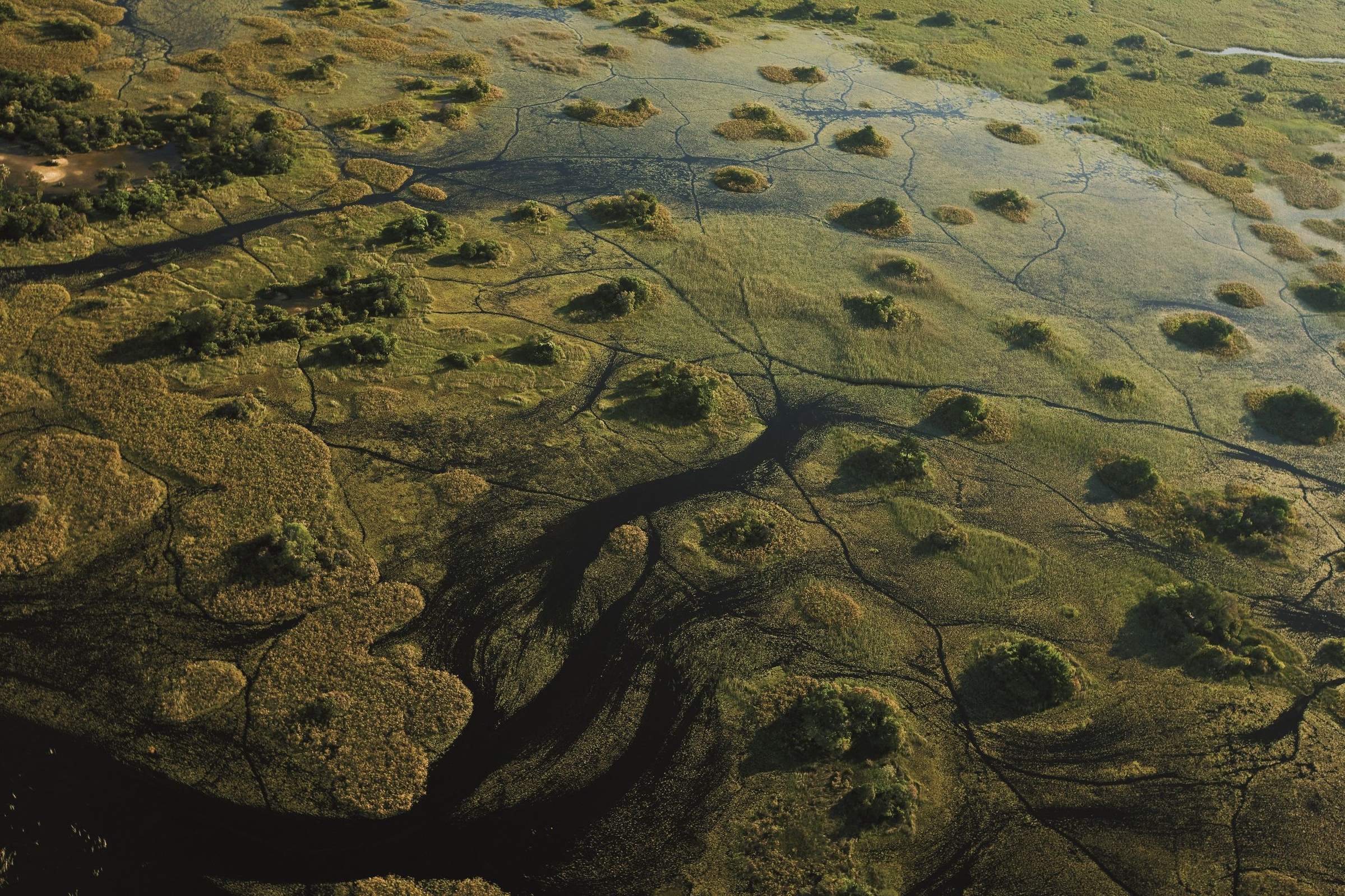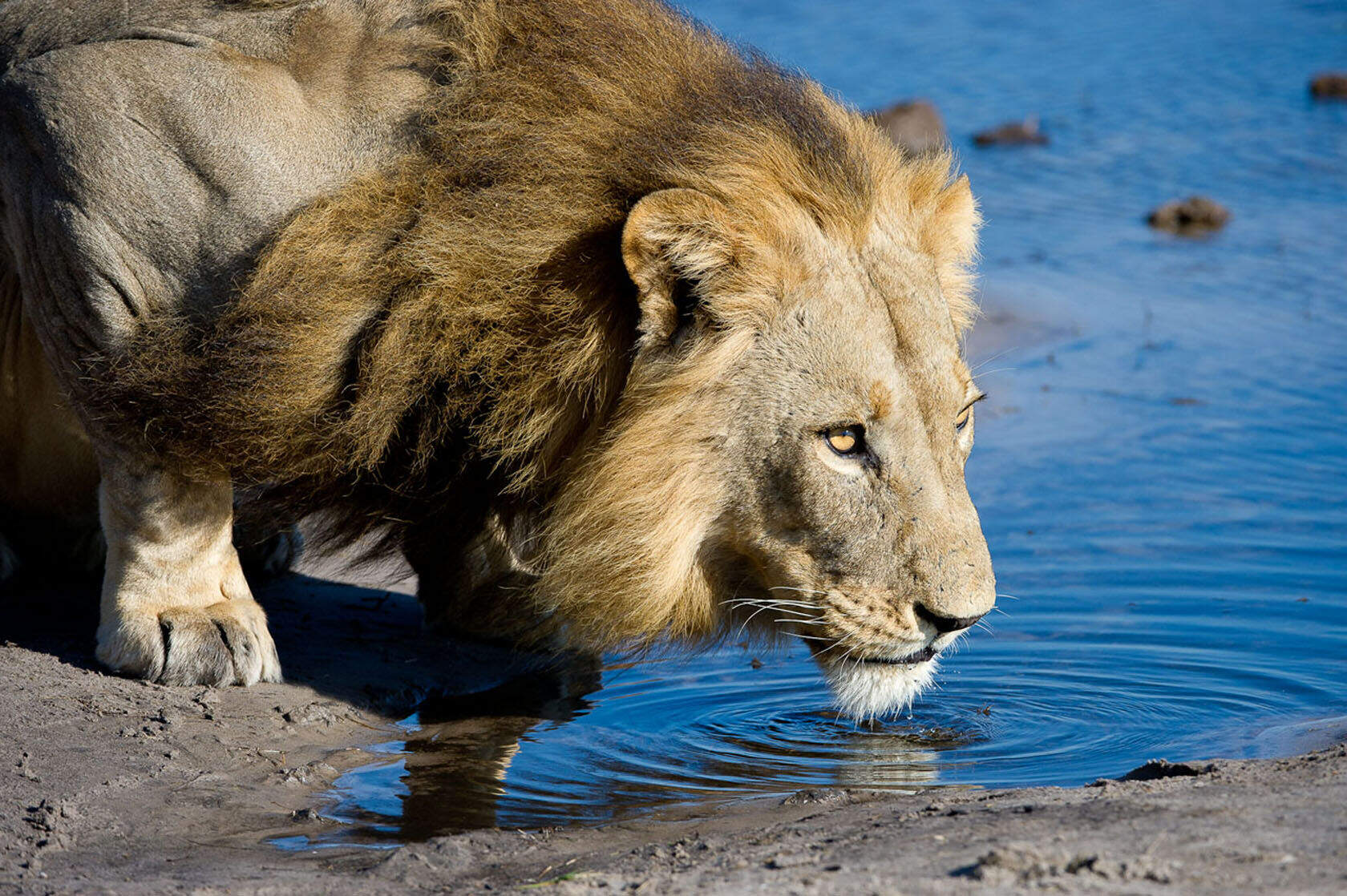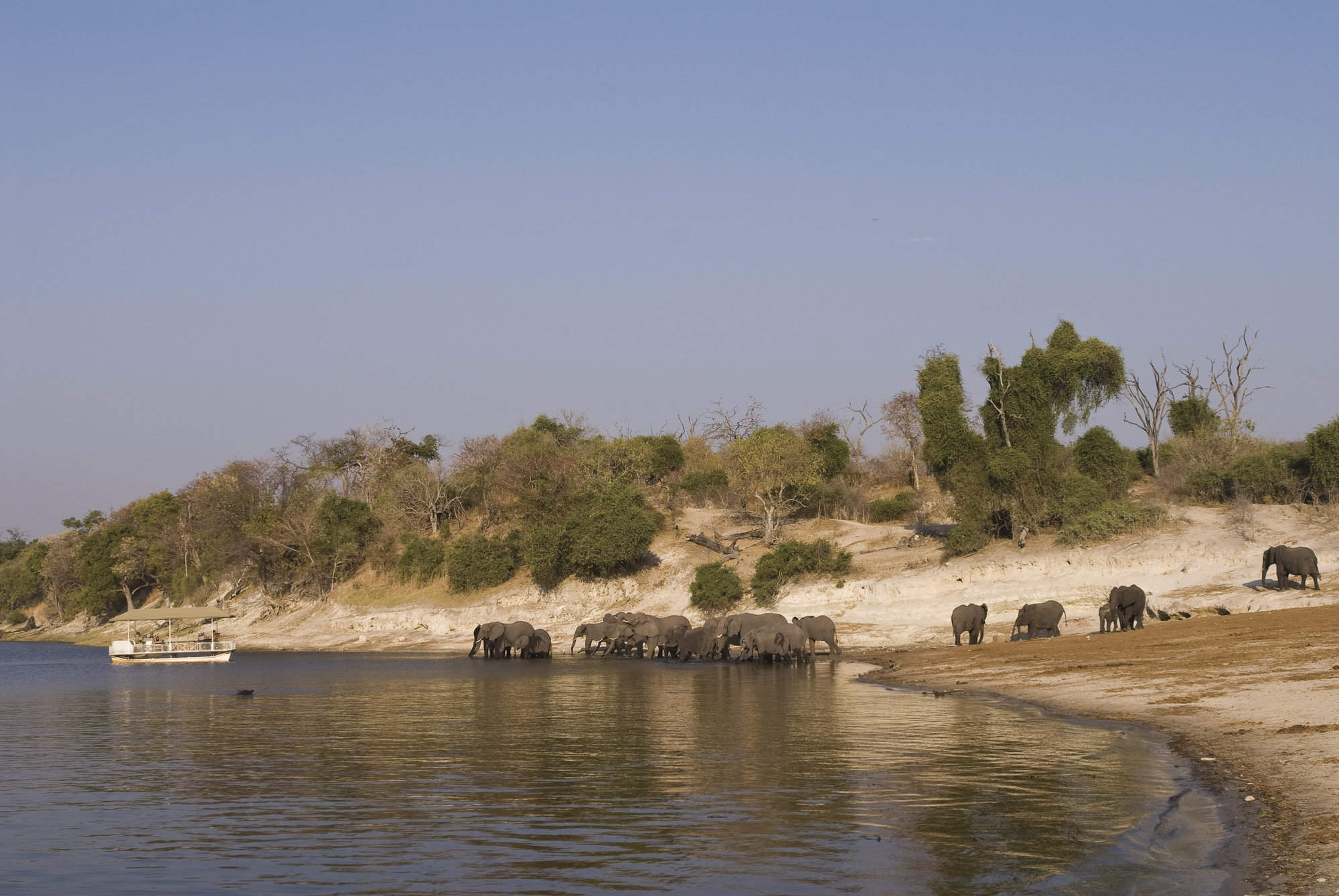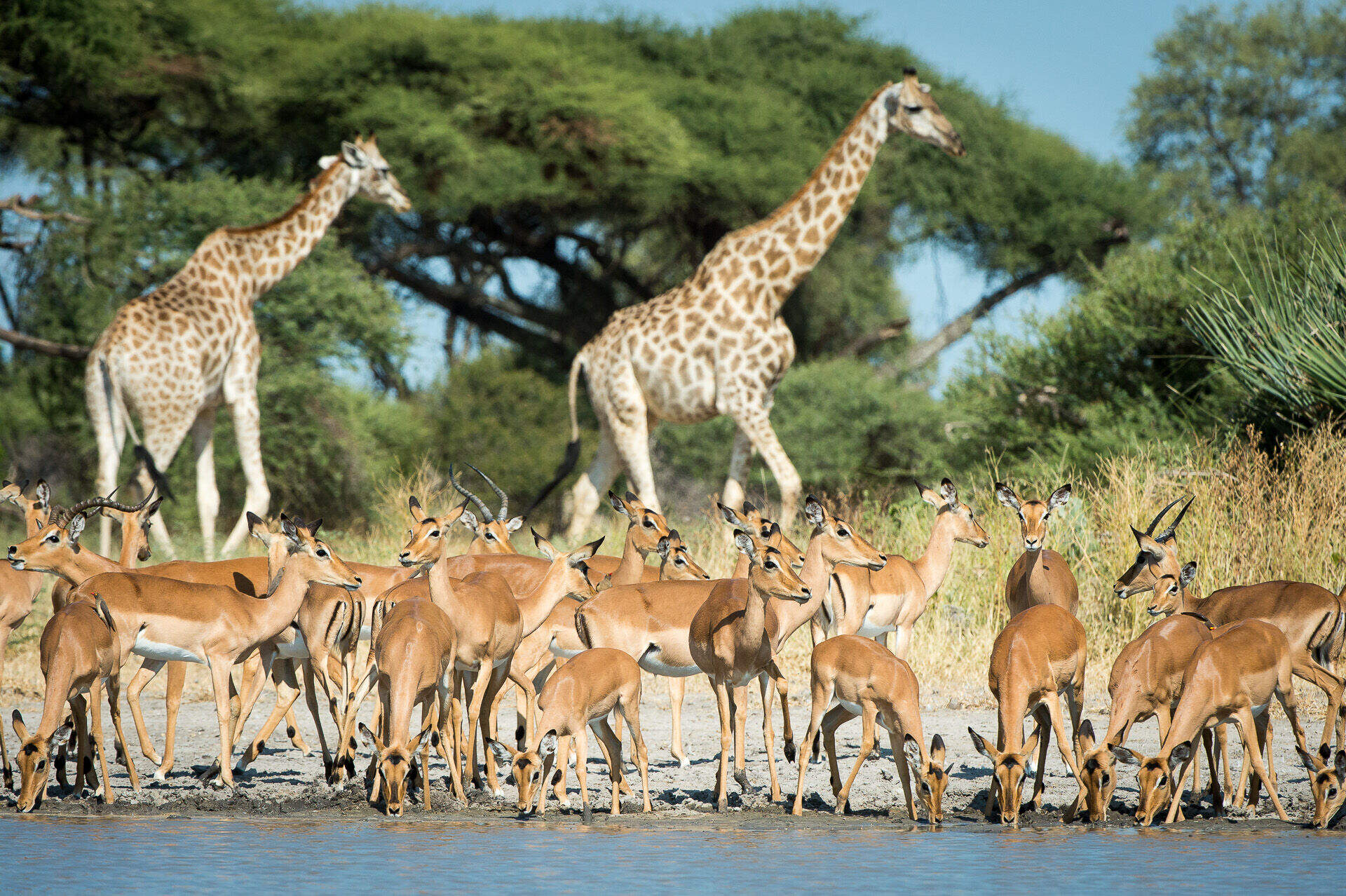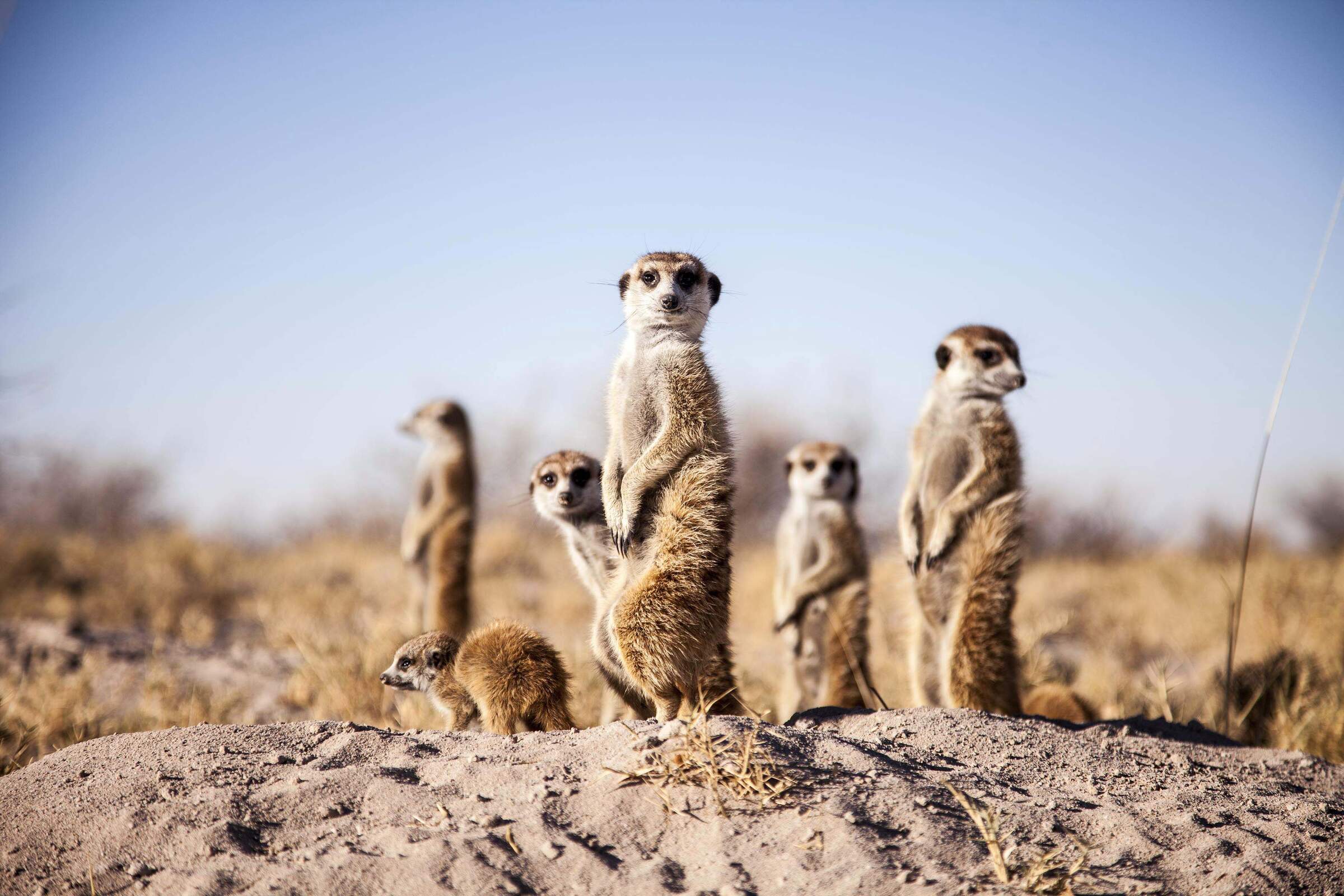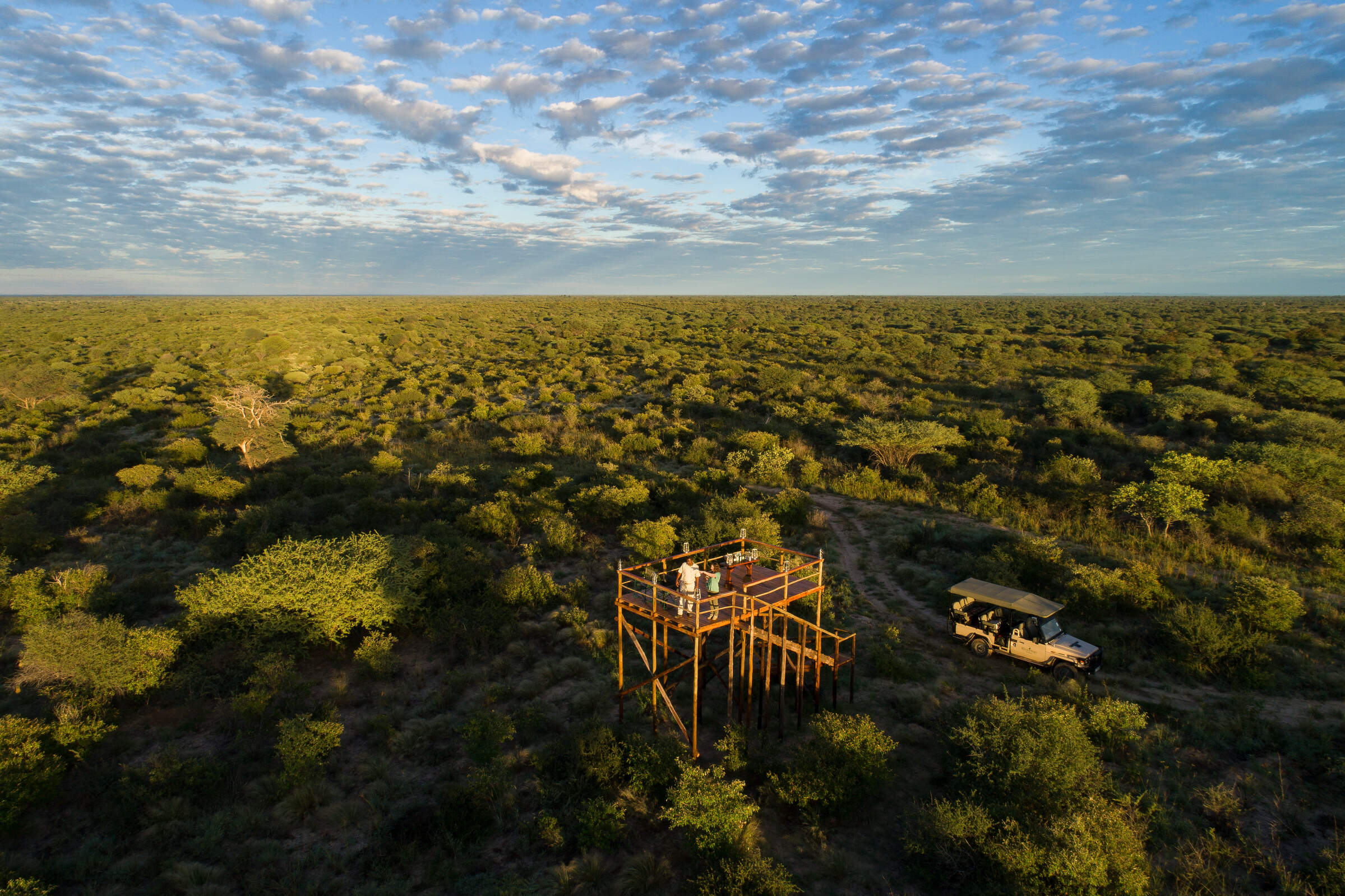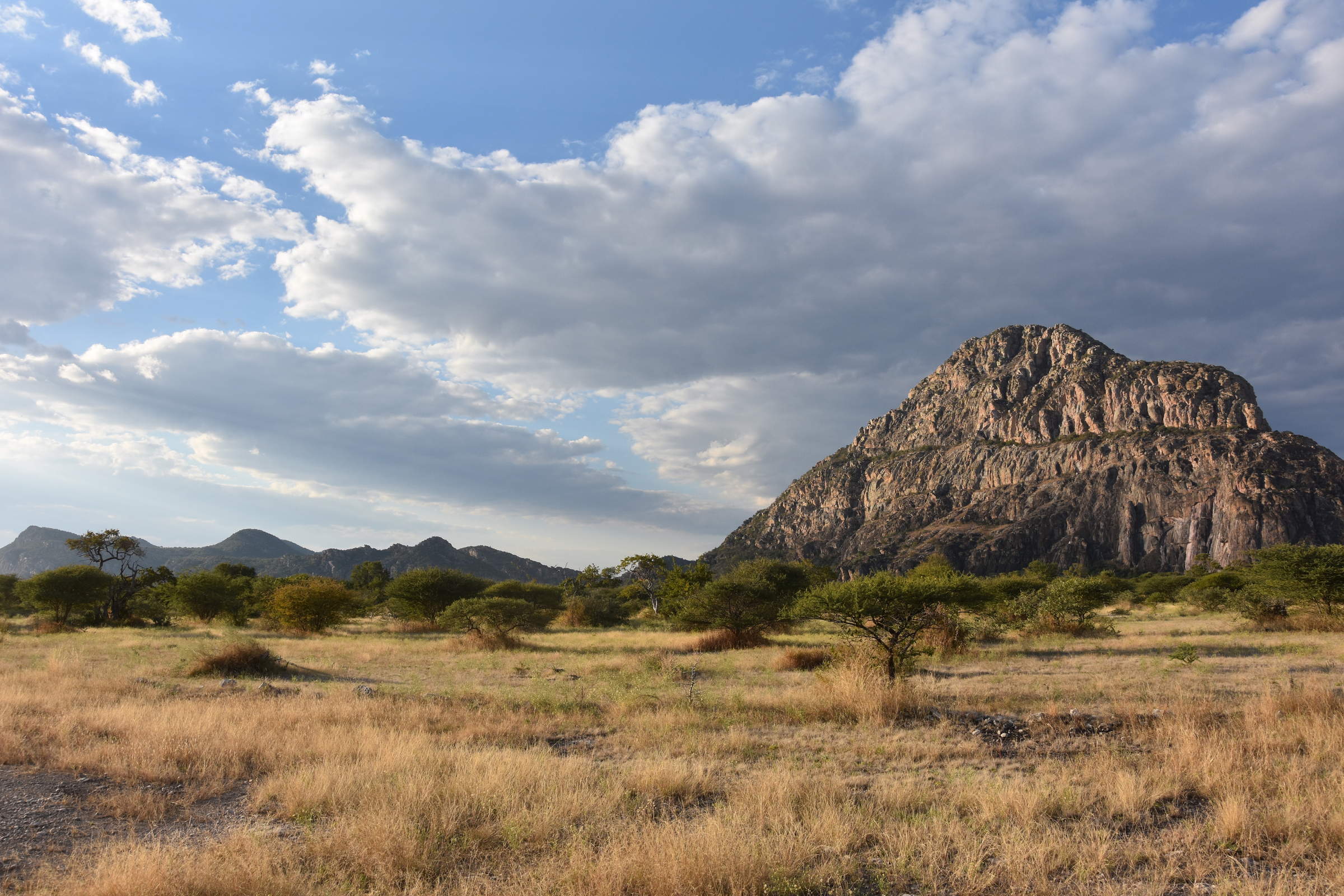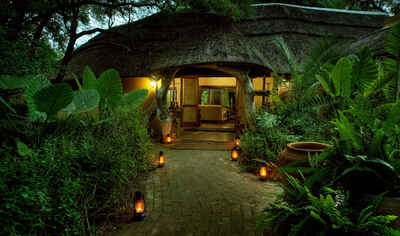
Comfortable camps await you in Maun
Be in the bush whilst in Maun
The village of Maun offers many activities
Maun
Maun
“The gateway to the Okavango”: it’s a heady title for this small, unassuming town at the southern tip of the Delta.
Located at the southern edge of the Delta, Maun has the feel of a frontier town where safari stories and local culture meet in an easy-going blend. Most visitors arrive through its small, modern airport, sometimes spending just a night before or after heading out to the Delta’s wilderness delights.
Landing in the heart of this little town though, it’s easy to take a short walk to nearby gift shops and friendly local cafés for tasty treats and a taste of Botswana’s warm hospitality. It’s a refreshing break from the business of major international hubs, and a good way to relax into the gentle rhythm of the country from the moment you arrive.
If you want to thoroughly ease into your trip though, take a day or two at one of the town’s best lodges relaxing by the Thamalakane River that provides a hint of the waterways ahead. Or get up close and personal with the resident giraffes at Thamo Telele, meet the elephants at Elephant Havens, stretch your legs on a walking trail or capture the Okavango and Kalahari vastness in a helicopter trip - an unforgettable view of the spectacular landscape that stretches as far as the eye can see.
In town, Maun is a great base for gathering last-minute safari essentials, checking out local basket weavers or sipping a beer at the town’s microbrewery. Linger for a day or two to get a taste of Botswana’s pace and character, and a warm and welcoming start to our Delta adventure.

Our top safari holidays in Botswana
Here are 26 great Botswana safaris to inspire you.
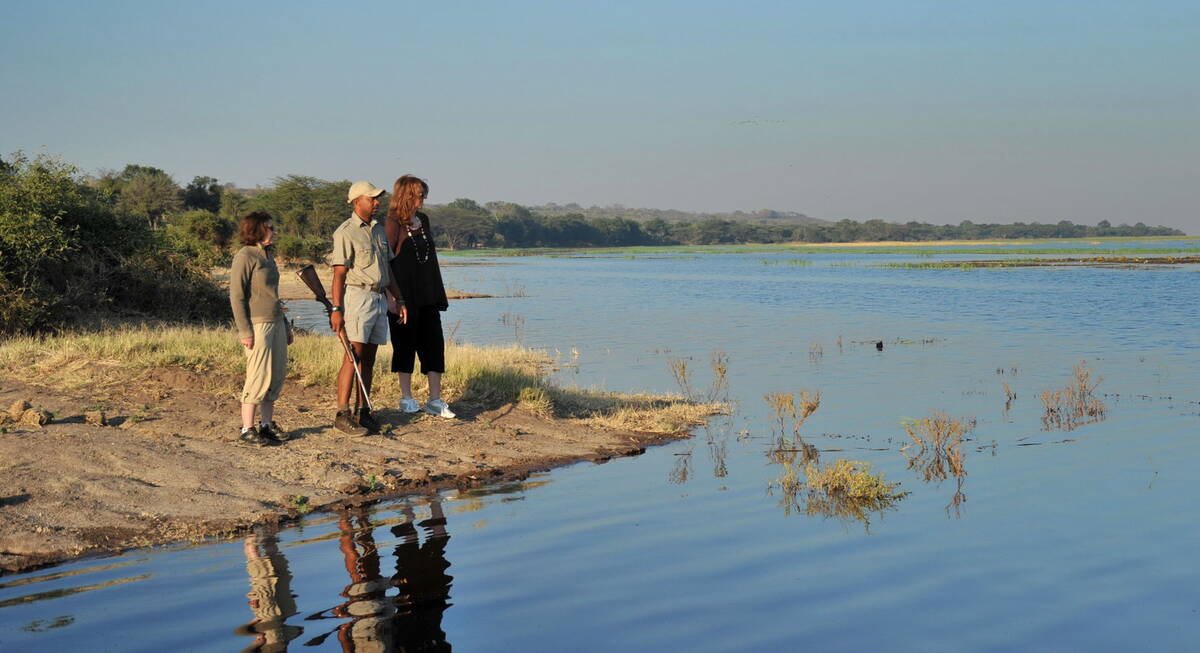
Wild Dog Safari
13 days • 5 locations
KASANE AIRPORT TO MAUN AIRPORT
An in-depth discovery of northern Botswana’s wilderness, from Chobe and the private Kwando Reserve to the Moremi and iconic Okavango Delta with a great variety of activities and wildlife.
US$12,930 - US$21,350 per person
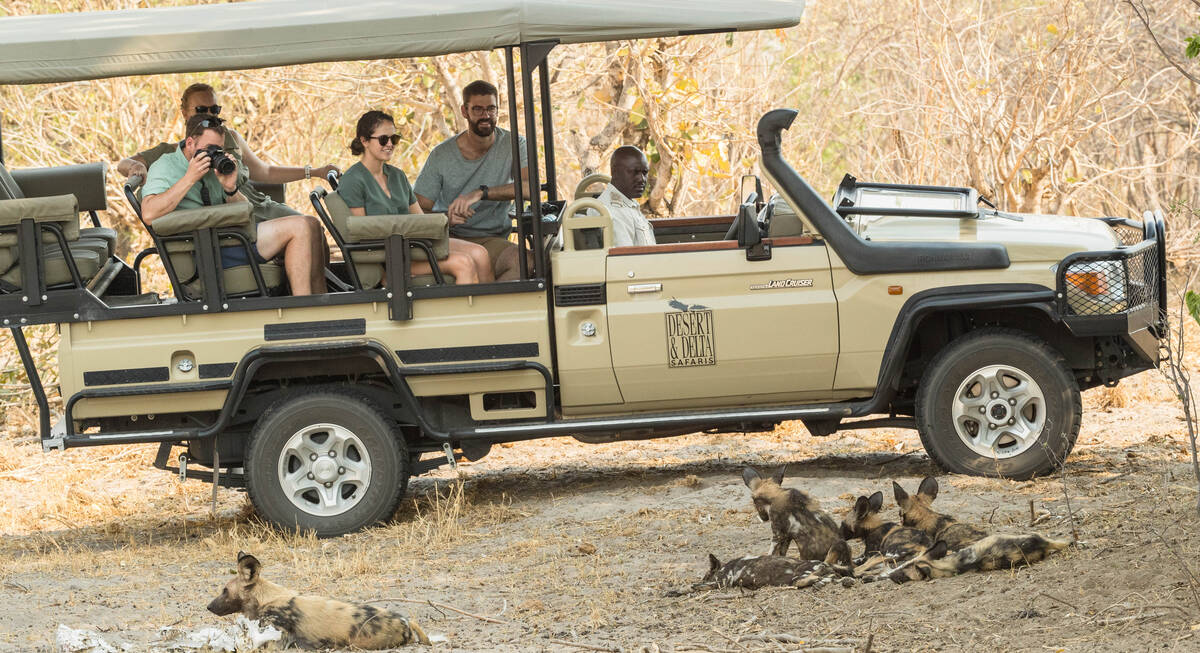
Porcupine Safari
11 days • 4 locations
MAUN AIRPORT TO MAUN AIRPORT
Visit dramatically contrasting landscapes boasting a variety of species during this exploration of Botswana’s top-safari destinations. A combination of national parks and private reserves allows for a range of activities.
US$11,780 - US$16,860 per person
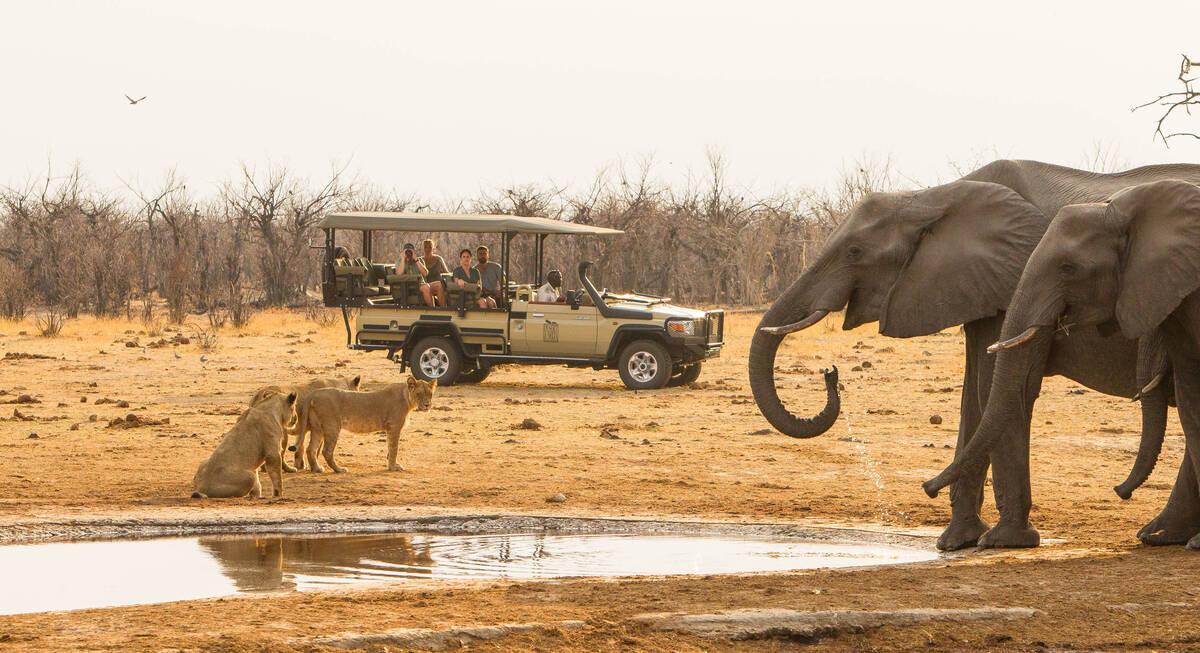
Spring Hare Safari
9 days • 3 locations
KASANE AIRPORT TO MAUN AIRPORT
An authentic and diverse safari to Botswana combining the Chobe Forest Reserve, Savuti Marshes and the Okavango Delta. Strong wildlife viewing, a variety of activities and excellent value camps.
US$8,710 - US$14,180 per person
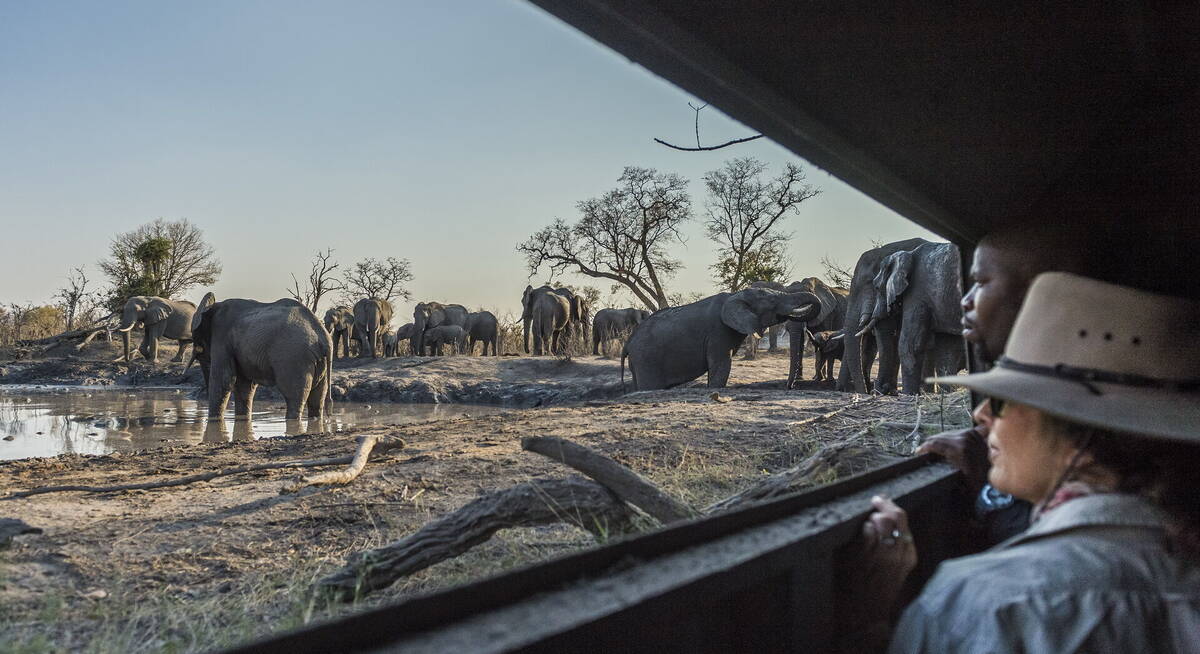
Large-spotted Genet Safari
9 days • 3 locations
MAUN AIRPORT TO MAUN AIRPORT
A luxury safari exploring the Okavango Delta and Linyanti–Savuti, two of the best wildlife viewing areas in Botswana, staying at three top camps renowned for their guiding for a first-class experience.
US$14,230 - US$23,640 per person
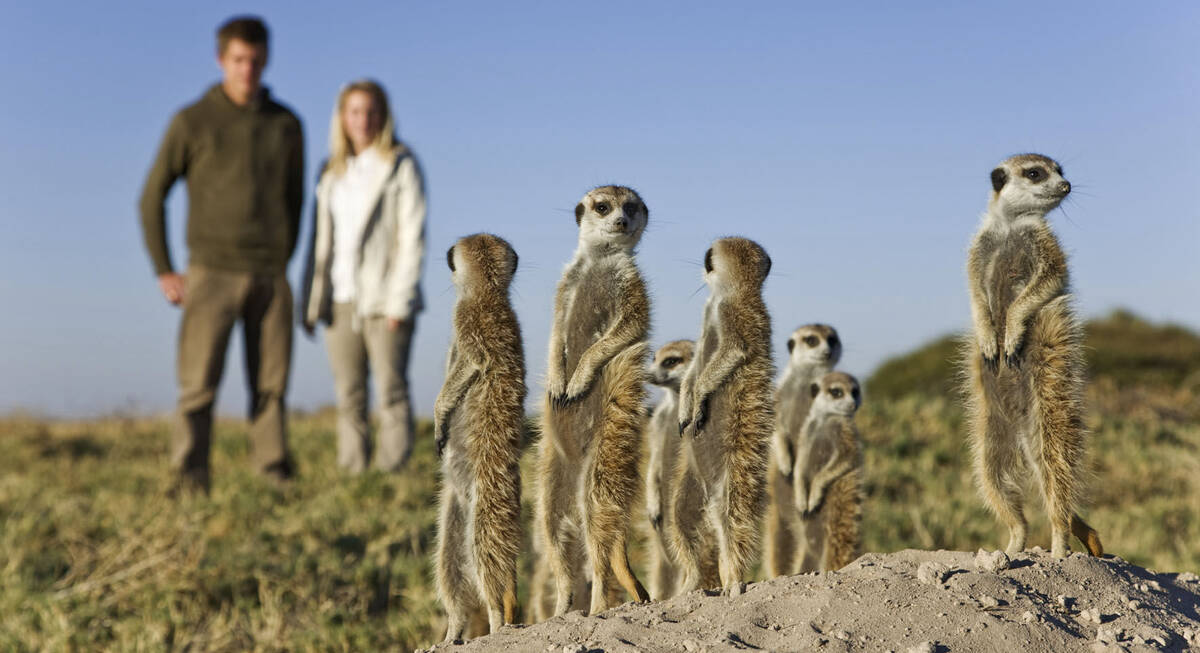
Red Lechwe Safari
9 days • 3 locations
MAUN AIRPORT TO MAUN AIRPORT
Superb guiding from three fabulous camps full of character in three contrasting areas for a fabulous safari to the Okavango Delta and Kalahari Desert.
US$17,600 - US$28,240 per person
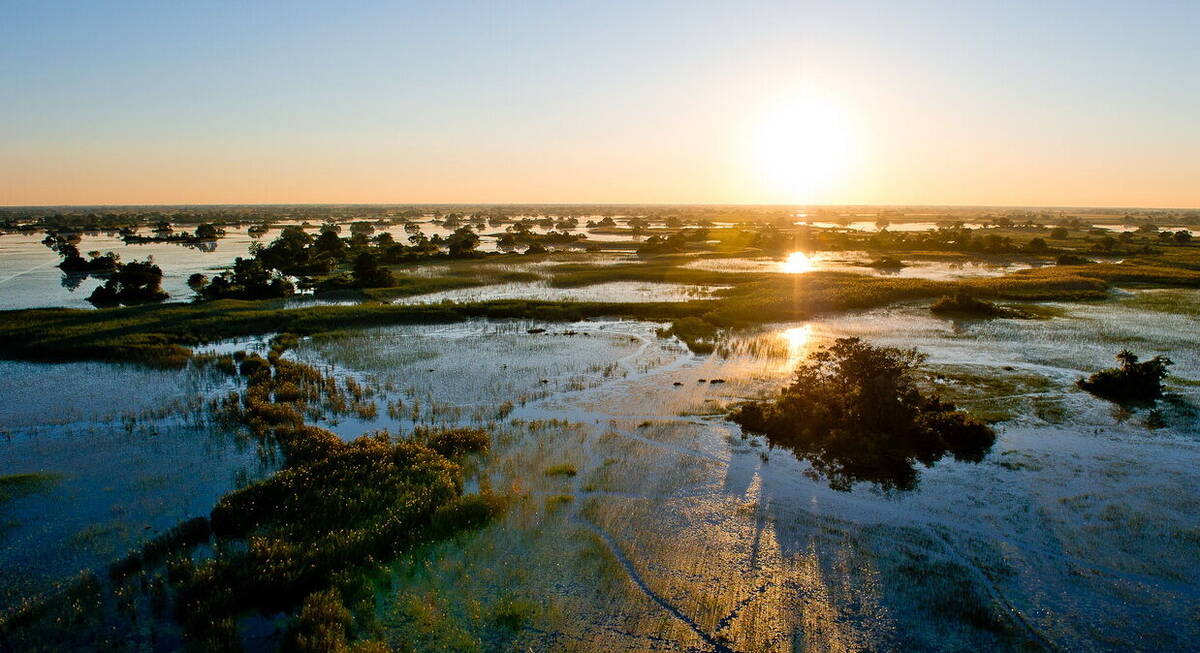
Steenbok Safari
9 days • 3 locations
MAUN AIRPORT TO MAUN AIRPORT
A classic Botswana safari exploring the Moremi, Chobe National Park and Okavango Delta. Excellent wildlife viewing and a variety of activities from three of our favourite traditional tented camps.
US$8,920 - US$13,480 per person
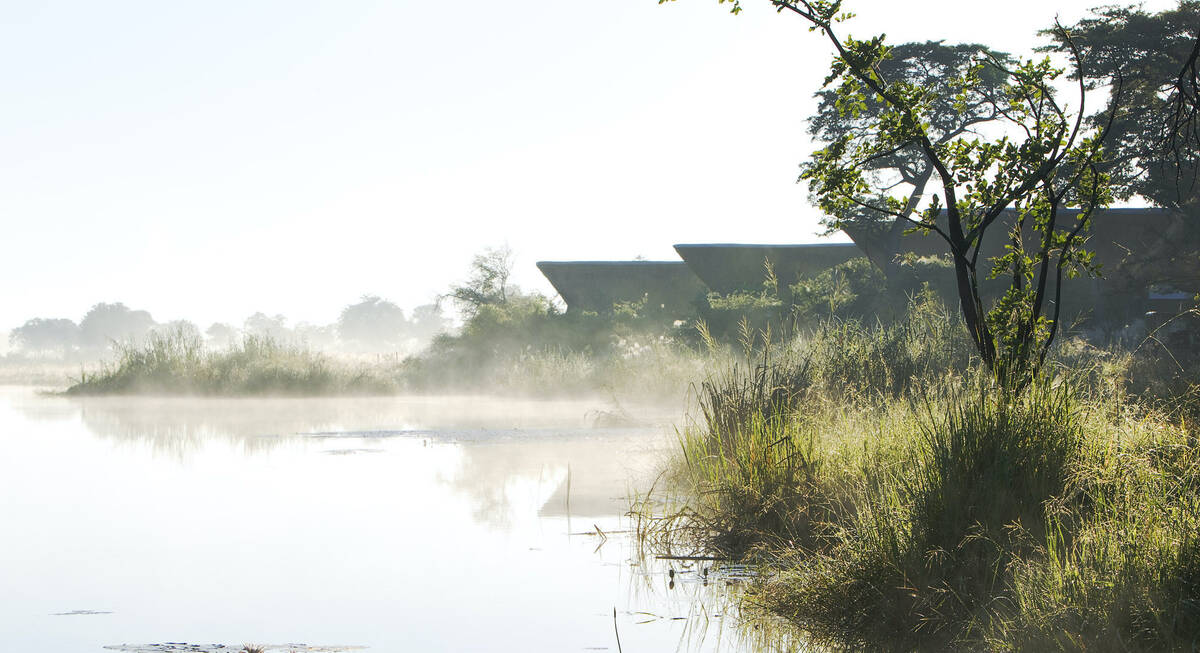
Pangolin Safari
8 days • 3 locations
MAUN AIRPORT TO MAUN AIRPORT
Three relaxed, local feeling camps in pristine settings – the Kwando Reserve and Okavango Delta. Guided by a driver and tracker at each, this a great trip for spotting Botswana’s top predators.
US$9,730 - US$16,340 per person
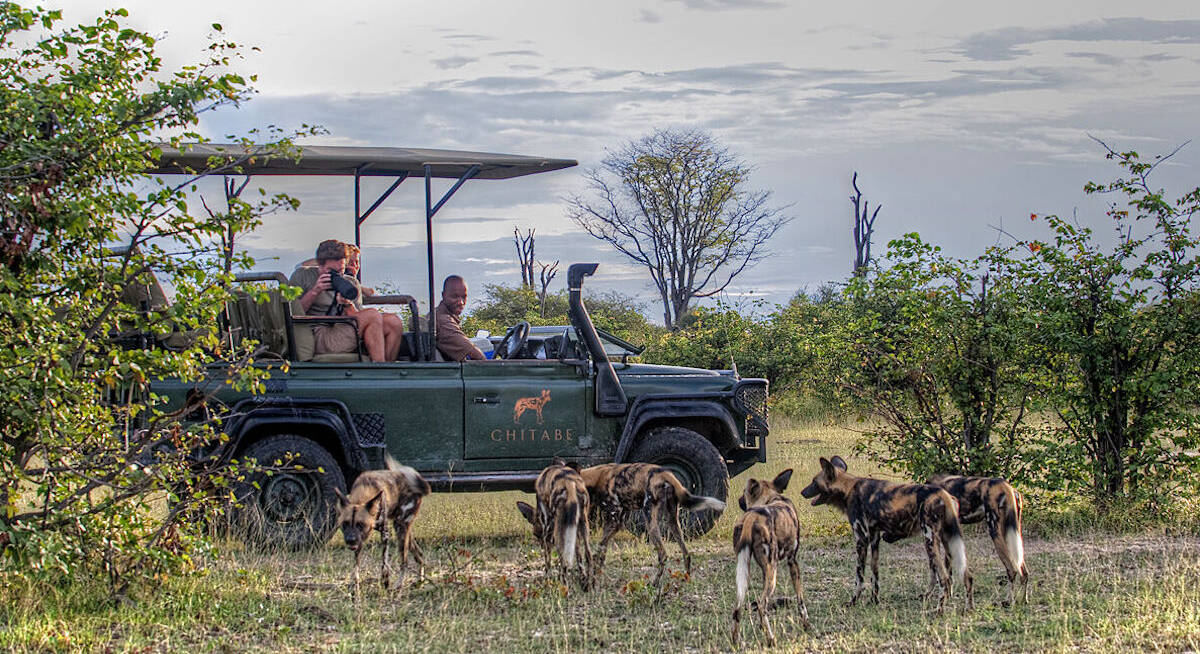
Bushbuck Safari
8 days • 3 locations
MAUN AIRPORT TO MAUN AIRPORT
Discover three of Botswana’s best game-viewing regions with stays in the private Linyanti, Chitabe and Vumbura reserves. Intimate, smart camps offer a range of activities by which to discover these stunningly varied habitats.
US$18,020 - US$31,740 per person
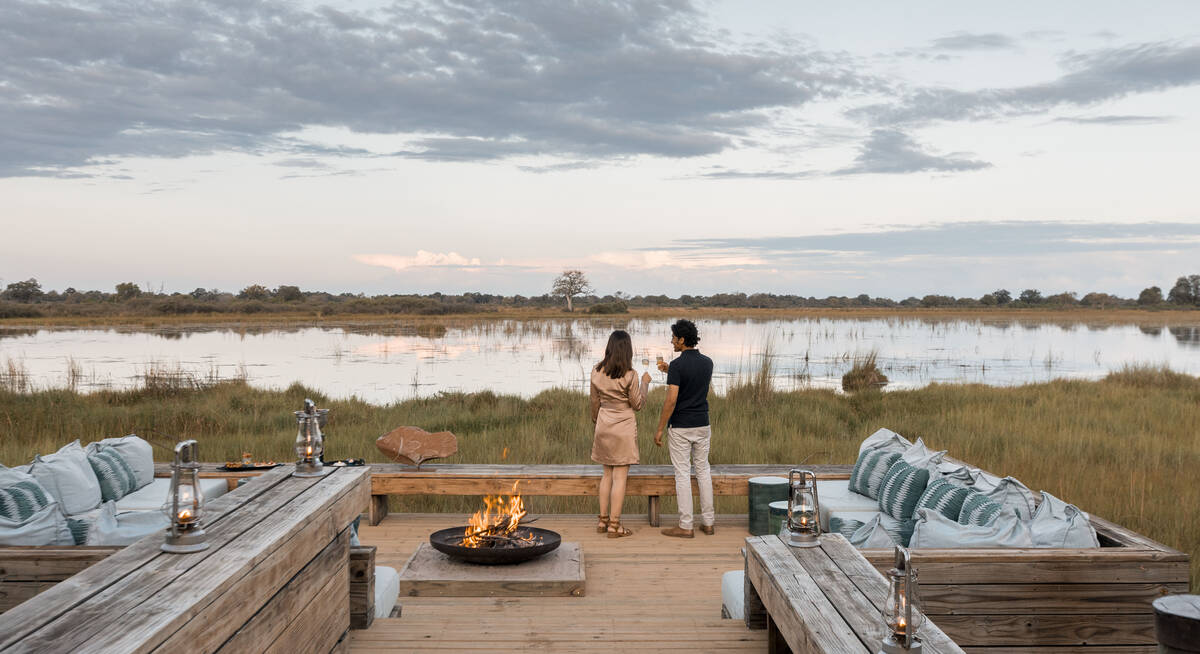
Reedbuck Safari
8 days • 3 locations
MAUN AIRPORT TO MAUN AIRPORT
Focussing on the Okavango Delta and combining the crème de la crème of Botswana’s camps – Zarafa, Vumbura Plains and Mombo – this is one of the finest safari experiences in Africa.
US$23,410 - US$36,280 per person
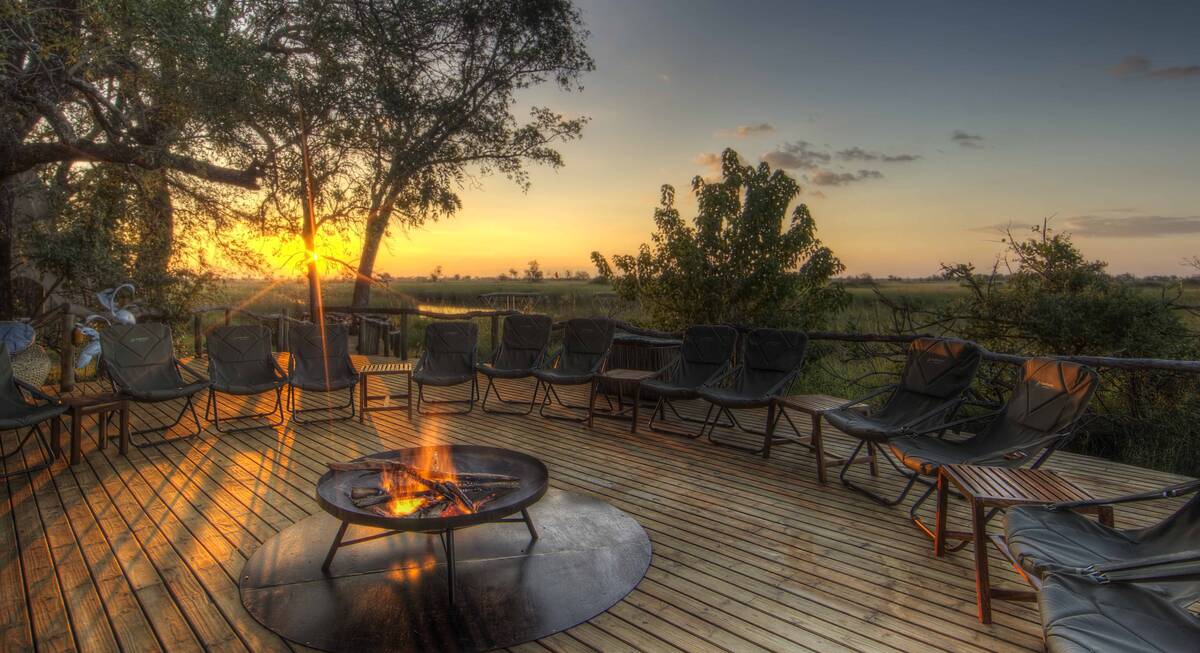
Tsessebe Safari
7 days • 3 locations
MAUN AIRPORT TO MAUN AIRPORT
Visit three sister-camps in and around Moremi Game Reserve during this thorough exploration of the Okavango Delta. A range of activities provide excellent opportunity to observe the local birdlife, mammals and fauna.
US$8,240 - US$11,410 per person
Recent reviews of Maun
The starting point for nearly all of our Botswana safaris, Expert Africa travellers have plenty to say about their time in Maun.
The charm of Thamalakane River Lodge with its peaceful, waterfront setting; the wonderful walking trails and enchanting giraffe encounters at Thamo Telele, and the ability to simply explore a friendly African frontier town.
Click below to browse our 115 genuine traveller reviews of Maun, its accommodation options and our Botswana safaris.
Arrived 16 Feb 2025, 11 nights
"My Feb 2025 trip"
Overall rating: Excellent
Arrived 26 Jan 2025, 11 nights
"Green Season Botswana"
Overall rating: Excellent
Arrived 3 Nov 2024, 9 nights
"My Nov 2024 trip to the Delta "
Overall rating: Excellent
Arrived 25 Oct 2024, 11 nights
"Botswana Okavango Trip Oct/Nov 2024 trip"
Overall rating: Excellent
Arrived 12 Oct 2024, 12 nights
"Our Oct 2024 trip"
Overall rating: Excellent
Arrived 4 Sep 2024, 14 nights
"My Sep 2024 trip"
Overall rating: Excellent
Arrived 31 May 2024, 18 nights
"My May 2024 trip"
Overall rating: Excellent
Arrived 22 May 2024, 14 nights
"My May 2024 trip"
Overall rating: Excellent
Arrived 27 Apr 2024, 28 nights
"Our seventh trip to Africa"
Overall rating: Excellent
Arrived 9 Apr 2024, 15 nights
"My Apr 2024 trip"
Overall rating: Excellent
The best places to stay in Maun
Maun's accommodation scene has evolved considerably from being a necessary stopover for Delta-bound travellers into a lively destination in its own right, with a range of excellent options. From boutique bed and breakfasts to safari lodges on private reserves, there are now some super spots, often along the tranquil Thamalakane River, to relax after a long flight, laze around after an exhilarating Okavango safari, or simply to linger a bit longer to explore Maun’s surroundings.
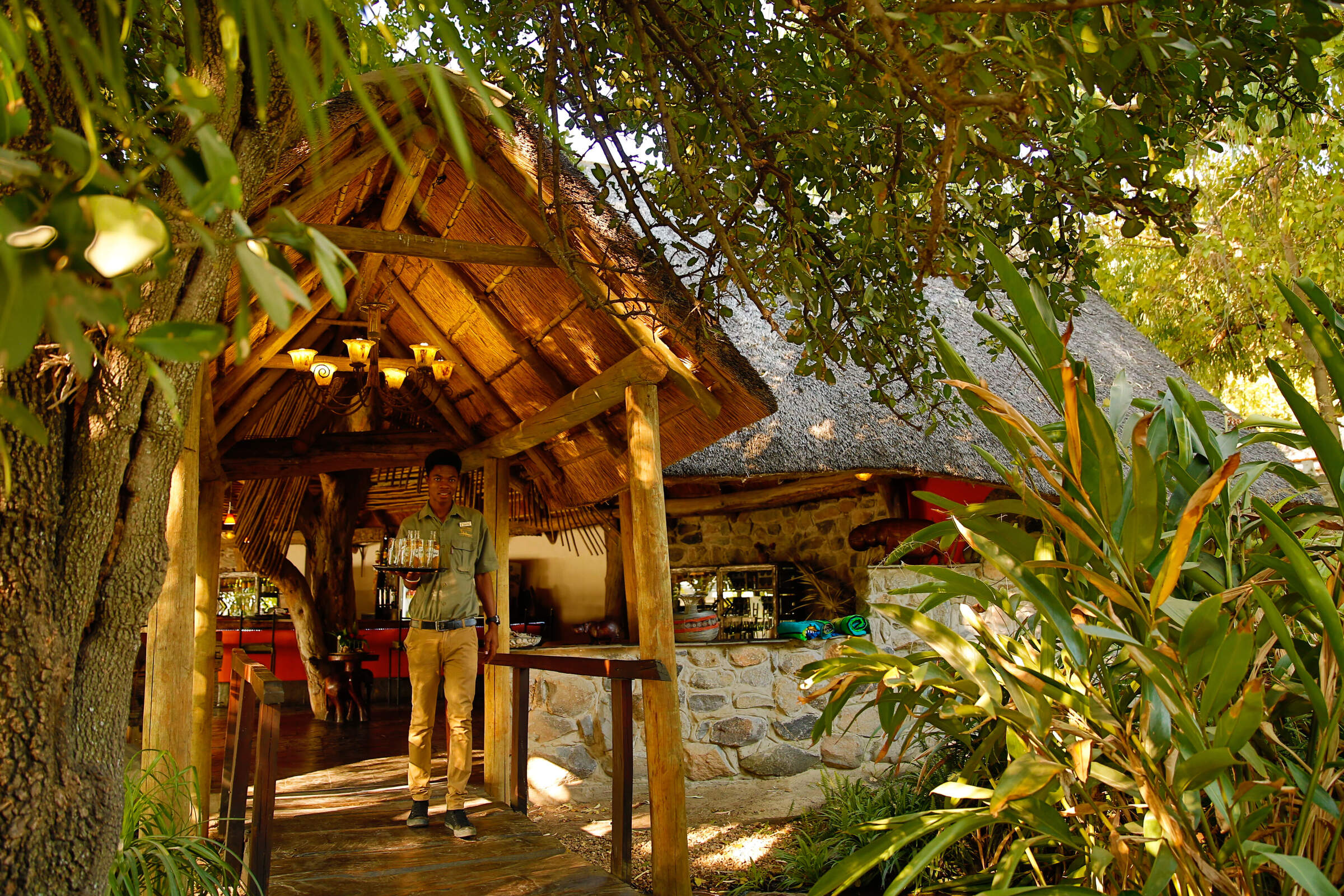
Thamalakane River Lodge
With its tranquil riverside location, Thamalakane makes an excellent buffer between a tiring long-haul flight and the magic of a safari.
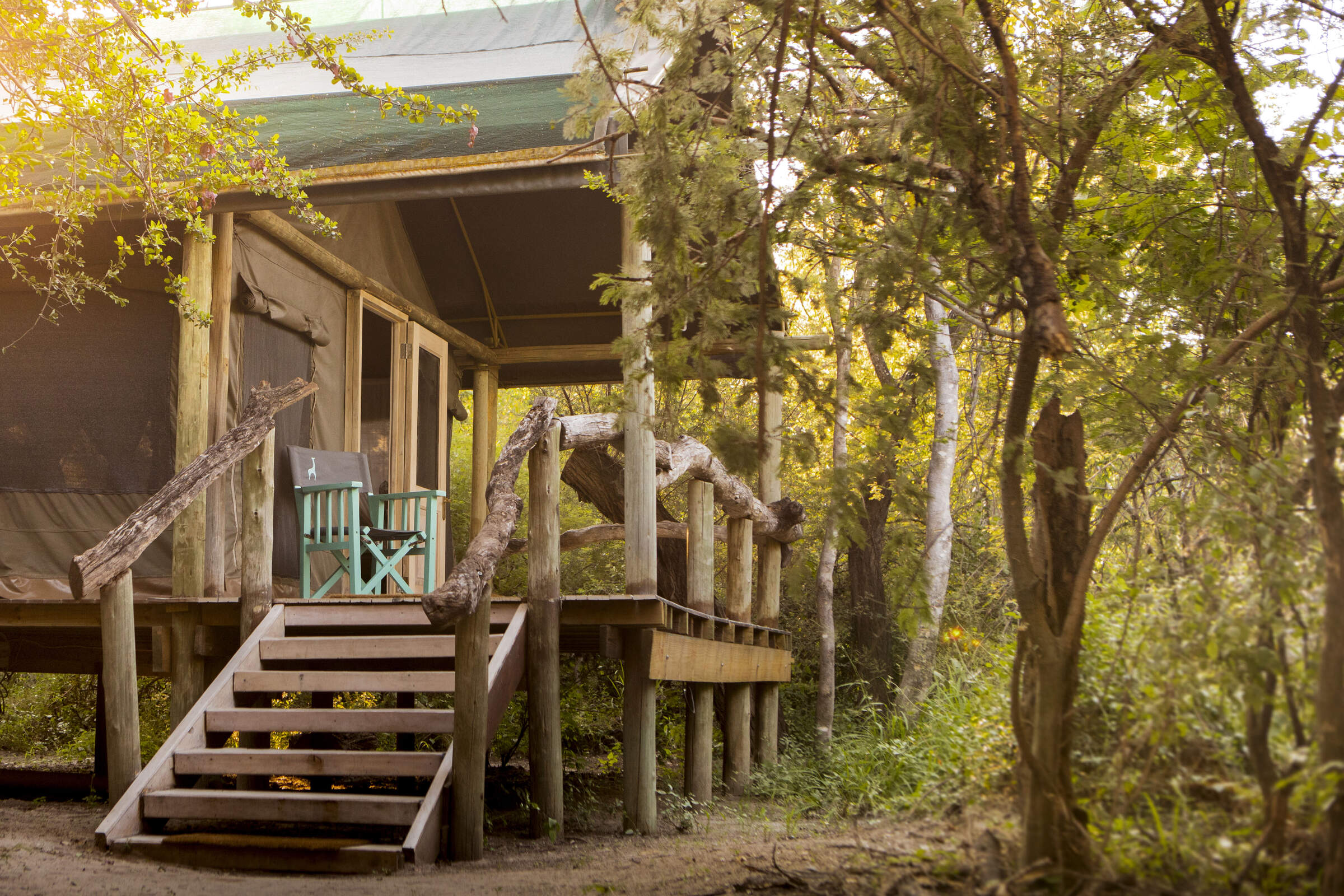
Thamo Telele
On the outskirts of Maun, Thamo Telele is set in a private game reserve with walking trails and a giraffe experience: ideal at the start or end of a safari.
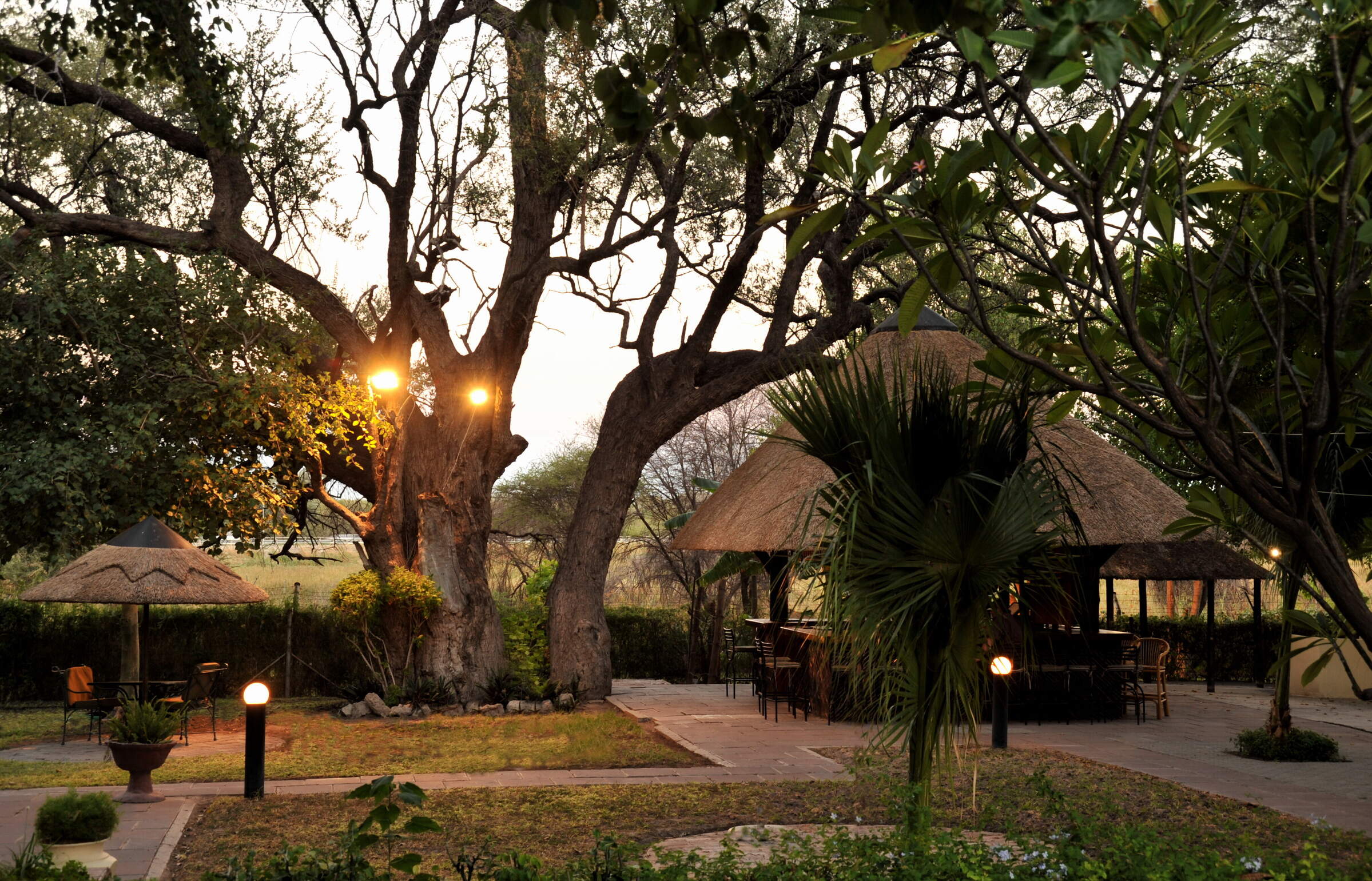
Riley's Hotel
In the heart of Maun, about 3km from the airport, Riley’s makes a relatively reliable stopover for one night.
Maun’s wildlife hotspots
Whilst not a primary destination for wildlife in itself, there are still plenty of opportunities to see animals and birds in and around Maun, especially along the riverfront.
Perhaps the most wonderful animal interactions are the fabulous giraffe encounters available at Thamo Telele alongside the ability to walk and horse-ride on the lodge’s lovely reserve trails, and the gently riverside birdwatching from Thamalakane River Lodge.

88% success

86% success

63% success

20% success

0% success

0% success
The best time to visit Maun
Maun has two distinct seasons that shape its landscapes and wildlife.
The green season (November to April) brings warm temperatures and dramatic afternoon or evening thunderstorms, transforming the scenery into a vibrant, lush paradise. This period is perfect for birdwatching, with migratory species arriving in large numbers and breeding plumage on display. Scenic flights over the Delta and boat trips through the channels offer stunning views of the freshly rejuvenated landscape.
The dry season (May to October) features cooler temperatures and exceptional wildlife viewing in the nearby Okavango Delta and Moremi Game Reserve, as animals concentrate around scarce water sources. The annual floods peak between June and July, creating a spectacular mosaic of lagoons and channels, best appreciated from a scenic flight over the Delta. This is also a prime time for exciting game drives, offering close-up encounters with Botswana’s rich wildlife.
Jan
Feb
Mar
Apr
May
Jun
Jul
Aug
Sep
Oct
Nov
Dec
Maun in January
January marks the peak of Maun's rainy season, with short but intense evening showers and occasional thunderstorms. While temperatures remain high, they are cooler than the preceding months of October to December. Wildlife viewing in the nearby Okavango Delta is more challenging as animals disperse into the lush, green vegetation.
In Maun, the Nhabe Museum provides an interesting and dry refuge to explore local culture and history. Beyond the town, January is an excellent time to witness the zebra and wildebeest migration in Nxai Pan and Makgadikgadi salt pans, where flooded pans sometimes attract large flocks of breeding flamingos.
- Warm temperatures with occasional thunderstorms
- Blue skies with strong sun between rains
- Birdlife at its peak, with many migratory species present
- Maun is green and vibrant, teeming with life
Our view
A good time to visit, with pros & cons
Weather in January
Maun in February
February in Maun mirrors January’s weather, with heavy evening rains and high daytime temperatures. The landscape remains lush and full of life. While larger animals are harder to spot around Maun due to dense vegetation, smaller creatures and insects are abundant.
In the nearby Okavango Delta, rising waters create a dynamic ecosystem, making this an ideal time for birdwatching along the Thamalakane River, where many species are in their breeding plumage. Cultural tours to nearby villages provide a deeper understanding of local life during the wet season. With fewer visitors, camps and lodges have good availability and lower rates.
- Warm with occasional thunderstorms
- Many young animals and excellent birdwatching opportunities
- Rising Delta waters enhance the ecosystem
- Cultural tours to local villages offer rich insights
- Low visitor numbers and good lodge availability
Our view
This is not a great time to visit
Weather in February
Maun in March
March sees Maun's rains starting to diminish, with many clear, sunny days interspersed with occasional afternoon thunderstorms. The landscape remains lush and vibrant, and wildlife viewing begins to improve as vegetation starts to thin, particularly in Moremi Game Reserve. Many animals and birds are finishing raising their young, offering unique sighting opportunities.
March is an excellent time for scenic flights over the Delta, providing breathtaking views of the verdant landscape. The Maun International Arts Festival often takes place this month, celebrating local culture and creativity. With moderate visitor numbers, it's a great time to enjoy Maun's attractions with the locals.
- Rains taper off, warm and sunny
- Spectacular birdlife, including migratory species
- Improved game viewing in Moremi Game Reserve
- Stunning photography opportunities in lush surroundings
- Fewer tourists, often lower rates available
Our view
A good time to visit, with pros & cons
Weather in March
Maun in April
April typically marks the end of the rainy season in Maun, with clear skies and a lush, green landscape. Night temperatures begin to drop, especially in the nearby salt-pan areas of the Kalahari. In the bush, wildlife starts migrating from the Kalahari towards permanent water sources.
April can be good for boat cruises on the Thamalakane River, offering excellent birdwatching and hippo sightings. As Maun enters its shoulder season, accommodation rates begin to rise but remain relatively affordable. April offers a pleasant mix of weather and wildlife experiences.
- Cooler evenings with occasional light showers
- Maun and its surroundings remain lush and green
- Wildlife begins to shift towards water sources
- Shoulder season offers good rates and availability
Our view
A good time to visit, with pros & cons
Weather in April
Maun in May
May is a popular month to visit Maun, and in the surrounding wildlife areas, as it signals the last month of the shoulder season before peak rates. May's pleasant weather and improving game viewing make it a favourite time for many visitors to Maun. Rain is rare, and the annual floods from Angola begin to reach the northern Okavango Delta, creating spectacular changes in the landscape. Cooler mornings and evenings increase predator activity, and animals starting to congregate more around water sources in Moremi Game Reserve and the Delta, although tall grasses may still obstruct views.
This is a lovely time for scenic flights over the Okavango from Maun's airport, offering stunning views of the advancing floodwaters, and mokoro trips in the Delta provide tranquil experiences amidst the changing landscape. In town, the Nhabe Museum hosts special exhibitions showcasing local art and culture.
- Cool mornings and evenings with little rain
- Game viewing improves as water recedes
- Shoulder season ends; availability decreases
- Stunning scenic flights over the Delta
Our view
A very good time to visit
Weather in May
Maun in June
June marks the start of the dry season in Maun. Days are warm and sunny, while mornings and evenings can be chilly, sometimes dropping to freezing temperatures. Clear skies and low humidity create perfect conditions for wildlife photography. As surface water diminishes, wildlife concentrates around remaining water sources in the Okavango Delta and Moremi Game Reserve, making for rewarding game viewing.
Cultural tours to nearby villages are particularly enjoyable in the cooler weather, providing insights into local life. June is also when the annual floods typically reach their peak in the Delta, creating a breathtaking landscape of lagoons and channels. Scenic flights over the Delta offer spectacular views of this seasonal transformation. Despite higher rates and limited availability, June remains a prime month for wildlife experiences around Maun.
- Warm days, cold mornings and nights
- Excellent conditions for wildlife photography
- Animals congregating around water sources
- Mokoro trips offer tranquil Delta experiences
- Peak season begins with higher rates
Our view
Fantastic: the very best time to visit
Weather in June
Maun in July
July is one of the coolest months in Maun, with chilly mornings and evenings paired with warm, sunny days. Game viewing in the Okavango Delta and Moremi Game Reserve is exceptional, as wildlife gathers around water sources and thinning vegetation improves visibility.
The Thamalakane River is an excellent spot for birdwatching and hippo sightings. Cultural tours to nearby villages provide a glimpse into traditional winter practices. Scenic flights over the Delta offer breathtaking aerial views of flooded plains and abundant wildlife. While accommodation rates are at their peak, July’s pleasant weather and superb safari opportunities make it one of the most popular times to visit Maun.
- Comfortable days, cold nights and mornings
- Superb game viewing in nearby Moremi and Delta
- Scenic flights over Delta highly recommended
- Peak season, book well in advance
Our view
Fantastic: the very best time to visit
Weather in July
Maun in August
August is a popular time to visit Maun, coinciding with European and North American summer holidays. Temperatures begin to rise towards the end of the month, but cloudless skies offer excellent stargazing opportunities. Wildlife viewing in the Okavango Delta and Moremi Game Reserve is outstanding, as animals concentrate around water sources.
Boat cruises on the Thamalakane River provide close encounters with hippos and crocodiles, while scenic flights offer stunning views of the Delta’s intricate waterways. The Nhabe Museum showcases local history and culture, adding a cultural element to a visit. Despite high rates and limited availability, August offers a diverse and rewarding experience for visitors.
- Dry, warm days with cool nights
- Excellent wildlife watching in Okavango Delta
- Moremi Game Reserve at its wildlife peak
- Okavango Delta in full flood, boat safaris ideal
- High season rates – advance booking essential
Our view
Fantastic: the very best time to visit
Weather in August
Maun in September
September ushers in warmer days and cool nights in Maun. The dry conditions create stark landscapes, while hazy skies contribute to breathtaking sunsets. Game viewing is excellent in the nearby Okavango Delta and Moremi Game Reserve, with large numbers of elephants and buffalo congregating around water sources.
Nearer to Maun, the Thamalakane River becomes a prime location for birdwatching as migratory species begin to return. Scenic flights over the Delta provide striking contrasts between dry land and remaining water sources. Cultural tours to nearby villages add depth to the experience, offering insights into traditional dry-season practices. Despite high rates, September remains one of the best months for game viewing.
- Warm days, cool nights
- Excellent wildlife viewing, especially in Moremi and the Delta
- Migratory birds return, enhancing birdwatching opportunities
- Stunning sunsets and photography conditions
- Peak season - lodges often fully booked
Our view
Fantastic: the very best time to visit
Weather in September
Maun in October
October is one of the hottest months in Maun, with dry conditions prevailing until late in the month when the first rains may begin. The nearby Okavango Delta and Moremi Game Reserve offer excellent game viewing as wildlife concentrates around scarce water sources. The heat creates unique photographic opportunities with dramatic landscapes and golden light.
Boat cruises along the Thamalakane River provide a refreshing escape from the heat while offering great wildlife sightings. The Nhabe Museum provides a cool retreat to explore local culture and history. As water levels drop, some water-based activities in the Delta may become unavailable, but game drives remain highly rewarding. Birdwatching is excellent, with many species displaying vibrant breeding plumage.
- Hot days, chance of rain late in month
- Excellent big game viewing opportunities
- Water activities less available as floods recede
- Final month of ‘peak season’ in most safari camps
Our view
Fantastic: the very best time to visit
Weather in October
Maun in November
November usually marks the start of the green season in Maun, with rising temperatures and increasing humidity leading to the first rains. Afternoon or evening showers rejuvenate the landscape, bring the first flush of fresh green back to the landscape. Wildlife in the Okavango Delta and Moremi Game Reserve begins to disperse as water sources become more widely available. Early November offers good game viewing at lower rates as the shoulder season begins.
It's also is an excellent month for birdwatching, as many migratory species arrive. Scenic flights over the Delta reveal the striking transition between the dry and wet seasons. The Maun International Arts Festival often occurs this month, celebrating local culture and creativity
- Hot days, sometimes humid, with refreshing rains
- Wildlife viewing good but less predictable
- Migratory birds arrive, excellent for birding
- Shoulder season begins, mid-range rates
Our view
A good time to visit, with pros & cons
Weather in November
Maun in December
December sees the rainy season in full swing in Maun, bringing some relief to the high temperatures. The rains transform the landscape into a lush and vibrant setting, making it a spectacular time for birdwatching along the Thamalakane River, where migratory species are abundant. Scenic flights over the Delta provide a unique perspective on the dramatic seasonal changes.
Wildlife viewing in the Okavango Delta and Moremi Game Reserve becomes more challenging as animals spread out, but great sightings are still possible in key areas. The Makgadikgadi salt pans near Maun may flood, attracting birds, and sometimes large flocks of breeding flamingos. With low-season rates, December is an excellent option for budget-conscious travellers looking to experience Maun and its surroundings.
- Warm with frequent rain
- Wildlife more dispersed, viewing challenging
- Excellent birdwatching with migratory species in abundance
- Stunning scenic flights over the Delta
- Low-season rates make it an attractive time to visit
Our view
A good time to visit, with pros & cons
Weather in December
Maun: In Detail
Maun
Maun has grown from a traditional village to a bustling safari town, featuring a mix of modern facilities from lodges to restaurants and souvenir shops. Despite its growth, it retains a laid-back charm, with traditional thatched-roof huts seen alongside newer buildings, and a down-to-earth atmosphere shaped by its proximity to nature and its significant resident population of old-time safari and conservation connoisseurs.
Why stay in Maun
It's a laid-back and welcoming place, with the Thamalakane River flowing quietly through town, creating a peaceful backdrop. And accommodation options are good value, so it’s worth considering if these more budget-friendly choices mean you can stretch your Botswana stay.
With comfortable lodges, good dining options, the chance to explore local attractions or pick up any last-minute safari essentials, a gentle start to your holiday in Maun may just enhance your overall safari experience, so perhaps consider Maun as more than just a stop-over…
Eating out in Maun
From quirky cafés to stylish eateries, there’s no shortage of places for a memorable meal these days. So if you’re staying in town for a couple of days or passing time waiting for a connecting flight, do check out our favourite Maun eateries. For a small town, it’s an unexpectedly delightful place to eat out.
Beside the airport:
- The Duck Café Bar near the airport is ideal for pre- or post-flight coffee and light bites, with sugar-dusted almond croissants, homemade quiche, and steak frites on offer. Live music evenings and art exhibitions lend a creative edge to this cosy café.
- Dusty Donkey Café’s terrace is a local favourite, with tempting iced teas, milkshakes, and a daily menu of Buddha bowls, Asian wraps, and towering burgers. Just minutes from the airport, it’s a convenient spot to start or end your Maun adventures, with handmade crafts and souvenirs to browse.
- Hilary’s Coffee Shop is a Maun institution, serving deliciously fresh, homemade meals for nearly 30 years. The shady, pot-plant-filled patio offers a tranquil setting for breakfast or lunch, with options ranging from hearty sandwiches to gluten-free and vegan specials.
- The Arts Café @ Motsana Cultural Centre combines a relaxed courtyard vibe with fresh bread, pancakes, and great coffee. It’s perfect for a leisurely breakfast or lunch, with a couple of craft shops adding to its appeal.
- Bull and Bush @ Okavango Craft Brewery. Alongside Maun’s award-winning microbrewery, this pub serves craft beers, wood-fired pizzas, and BBQ dishes with a backdrop of the brewing process itself. Live music, international sports screenings, and talks on conservation make this a pretty social hangout.
- Kwa Ga Ncinci is the place if you’re interested in trying some more local fare. Owned by the engaging Ncinci, this welcoming place serves up traditional specials at feet-in-the-sand wooden tables. If you’re in Maun on ‘Braaiday Friday’, enjoy steak and sausage with pap (a local, smooth maize porridge) and a cocktail hour.
- Marc’s Eatery is an absolute gem just outside town, blending fresh global flavours with a charming garden setting. From innovative salads to mouth-watering pastas, Marc’s is a highlight, with a deli offering baked treats and takeaway options too.
- Tandurei Maun serves up authentic Indian flavours under a thatched roof near the airport. Known for its butter masalas, kebabs, and fresh rotis, this spot’s quirky decor – including an old rescue plane – makes it a unique choice for a memorable meal.
Maun’s top activities
- Explore Local Culture: Get a taste of traditional Botswana life with a visit to the Hambukushu or Sexaxa Cultural Villages. At Hambukushu, visitors can try basket weaving, learn about local farming methods, and play traditional games in a recreated village setting. Sexaxa, set on the outskirts of Maun, offers insights into Bayei culture and is ideal for those curious about urban life with a traditional twist.
- Nhabe Museum: This small but vibrant venue is more of an art gallery than a museum, featuring rotating exhibits from local artists, alongside artefacts like musical instruments and hunting tools. It’s a wonderful way to learn about Botswana’s history and creativity through its people’s art.
- Thamalakane River Cruise: Float along the peaceful Thamalakane River, keeping an eye out for the area’s many bird species. A gentle boat trip offers a fresh view of Maun’s surroundings, with the potential for great birdwatching experiences.
- Horse Riding Adventures: For a more active exploration, Maun offers guided horseback rides along the Thamalakane and Boro rivers, with a super centre based at Thamo Telele lodge. Whether you’re a novice or experienced rider, these rides are a unique way to explore the area’s landscapes, with the chance to spot wildlife along the way.
- Elephant Havens: Just an hour’s drive from Maun, Elephant Havens sanctuary is home to orphaned elephants, providing care with the aim of eventual rewilding. Visitors can observe and photograph these young elephants up close, while learning about conservation efforts and the work being done to mitigate human-elephant conflict in the region.
- Scenic Flights Over the Delta: For the ultimate aerial view, a scenic flight over the Okavango Delta reveals its vast beauty in a way that’s hard to grasp from the ground. With options ranging from small planes to helicopters, these flights provide sweeping views of winding waterways, islands, and the diverse wildlife below – it’s magical!
Safaris near Maun
Okavango Delta
This UNESCO World Heritage Site, accessible via charter flights, is a top destination due to its unique ecosystem of water channels, islands, and lagoons. Known for its mokoro (canoe) safaris and diverse wildlife, the Delta offers sightings of elephants, hippos, and a rich variety of bird species. The Okavango's waterways, particularly around Chief's Island and the central Delta, are a core draw for nature enthusiasts.
How to get to the Okavango Delta from Maun: The Delta's proximity to Maun varies depending on the specific area you’re visiting. However, most lodges within the Delta are accessible only by air, with charter flights from Maun taking about 20 to 30 minutes. Flying – by light aircraft or helicopter – is by far the most common way to make this journey.
Moremi Game Reserve
Situated within the eastern part of the Delta, Moremi is renowned for its incredible biodiversity, with landscapes that range from floodplains to forests. It hosts an impressive array of wildlife, including leopards, wild dogs, and large herds of buffalo and elephants. Many travellers consider Moremi a must-visit due to its well-protected environment and reliable wildlife sightings.
How to get to Moremi Game Reserve from Maun: Located about 155km north-east of Maun, light aircraft fly from Maun to airstrips within Moremi, taking around 30 minutes.
Chobe National Park
Located to the north-east, Chobe is especially famous for its riverfront, where vast herds of elephants gather. Visitors often enjoy boat safaris along the Chobe River, providing close views of elephants, hippos, and other animals drawn to the water. The park's varied ecosystems, from floodplains to dry savannas, support a wide range of wildlife, including substantial predator populations.
How to get to Chobe National Park from Maun: Situated around 600km northeast of Maun, driving to and through Chobe takes several days, and is commonly undertaken with stops and game viewing on a private mobile safari. Charter flights direct from Maun to Kasane, the closest gateway to northern Chobe, take about 60-90 minutes.
Central Kalahari Game Reserve (CKGR)
South of Maun, CKGR offers a different experience with its arid landscapes and desert-adapted wildlife, such as the Kalahari lion and oryx. This remote reserve is ideal for adventurous travellers looking for solitude and an authentic wilderness experience.
How to get to the Central Kalahari from Maun: Approximately 250km south of Maun, flights to airstrips within CKGR have flight times of around 45 minutes.
Makgadikgadi Pans
These vast salt flats, located southeast of Maun, offer unique desert landscapes and seasonal wildlife migrations, including zebras and flamingos. During the wet season, the pans become a shallow lake, attracting various bird species, while the dry season transforms them into expansive, white salt flats. The area is also home to colonies of habituated meerkats, adding to its unique appeal.
How to get to Mkgadikgadi Pans from Maun: Located about 240km east of Maun, flights to airstrips for the lodges near the pans take around 30 minutes.
Map of Maun
Located in north-western Botswana, Maun is strategically placed for safari travel and is justifiably heralded as ‘The Gateway to the Okavango Delta’. Just 100km south of the Okavango Delta's main water channels, it’s the perfect starting point for travellers heading on Delta safaris.
To the north-east, Moremi Game Reserve (90km) is a popular destination for wildlife enthusiasts, known for its rich biodiversity and stunning landscapes. Chobe National Park, famous for its large elephant herds, is 270km north of Maun, accessible by road on a Botswana private mobile safari or by light aircraft flight.
Maun itself straddles the gentle Thamalakane River, with most places of interest being side on its northern side. Finding your way around this small town is relatively simple and we will always arrange transfers for our travellers.
Our top 3 hotels and places to stay in Maun
While fine old camps have lost much of their atmosphere, they may still be more interesting than some of the rather bland hotels that have sprung up to serve the business market. More appealing than these are a handful of small-scale ventures, such as a clutch of small self-catering establishments, which we have listed for you below. Ask us for more details of what's where, and what's likely to suit you best!

Thamalakane River Lodge
With its tranquil riverside location, Thamalakane makes an excellent buffer between a tiring long-haul flight and the magic of a safari.

Thamo Telele
On the outskirts of Maun, Thamo Telele is set in a private game reserve with walking trails and a giraffe experience: ideal at the start or end of a safari.

Riley's Hotel
In the heart of Maun, about 3km from the airport, Riley’s makes a relatively reliable stopover for one night.
Excursions in Maun
Optional, extra day-trips and excursions that are possible while you’re staying in Maun. Talk to us: these excursions are usually best arranged before you go.

Helicopter Flight - Botswana
Various: from 30 minutes to half a day.
Low-flying, agile and offering superb views, helicopters are an ideal way to move around the Okavango Delta.You can use them instead of fixed-wing inter-lodge transfers or as an addition to other wildlife watching activities, and of course, helicopters can hover to allow that perfect pic, whereas fixed-wings can’t.
More about Helicopter Flight
Looking for inspiration on where to travel next?
Visit our trip chooser to explore your options and find inspiration for your perfect African adventure
Inspire meFrequently Asked Questions
Maun FAQs
How do you get to Maun?
International Flights
- Addis Ababa, Ethiopia (ADD): Ethiopian Airlines provides a direct flight between Addis Ababa and Maun, connecting East Africa with Botswana in around 5 hours. This service is a good option for travellers coming from European and Middle Eastern regions, thanks to the airline’s extensive global network.
- Cape Town, South Africa (CPT): Direct flights from Cape Town to Maun run daily, with a flight time of approximately 2 hours and 30 minutes. This direct route offers a convenient choice for travellers combining Botswana with South African adventures on the Garden Route or Western Cape Winelands.
- Johannesburg, South Africa (JNB): Johannesburg is the primary gateway for most international arrivals to Maun, and the daily, direct flights take approximately 1 hour and 40 minutes. This short flight makes it the most popular route for those coming from Europe, North America, and other long-haul destinations.
- Kasane, Botswana (BBK): Located near Chobe National Park, Kasane is about 600 km north of Maun. Flights between Maun and Kasane take approximately 1 hour, providing an easy connection for travellers wishing to experience both the Okavango Delta and Chobe’s renowned wildlife.
- Gaborone (GBE): Botswana’s capital, Gaborone, is about 860 km from Maun. Daily flights with Air Botswana and other carriers cover the route in roughly 1.5 hours. This is a convenient option for those travelling within Botswana or transiting from South Africa.
Safari lodges and camps across the Okavango Delta and key safari areas often have private bush airstrips, making light aircraft the preferred method of transfer to and from Maun. These charter flights generally range from 20 minutes to an hour in length, depending on the distance from Maun and the specific location within the Delta. Charter flights also operate from Maun to smaller regional airstrips like Nxai Pan and Khwai, enhancing access to Botswana’s key safari areas.
For those looking to combine destinations, Maun’s central location and reliable air connections make it an ideal starting point for exploring Botswana’s diverse wilderness regions and combining trips here with South Africa or Victoria Falls.
Our team area all well-versed in the local and international flight schedules and will carefully plan all of your safari travel arrangements to ensure smooth journeys throughout your trip.
What is Maun airport like?
Recently modernised, the terminal now offers expanded facilities, including a longer runway that can accommodate larger aircraft like the Boeing 737 and Airbus A320. Inside, increased check-in counters, separate screening for international and domestic flights, spacious departure halls, and updated flight display boards provide a smoother experience for travellers.
Although the airport has a café, many prefer to step across the street to The Duck Café Bar or Dusty Donkey Café for barista-quality coffee, fresh meals, and a relaxed atmosphere.
For those travelling light, luggage storage options are limited, but most safari companies offer to collect and securely store any additional baggage for those transferring to regional camps. Car hire is conveniently available within and around the terminal, making it easy for visitors who wish to explore Maun and its surroundings before or after their Delta adventures
Is Maun a safe place?
Crime and safety
Petty crimes such as pickpocketing and theft are invariably more common in urban than rural areas. Visitors are advised to remain vigilant, especially in crowded places, and to avoid overtly displaying valuables. It's recommended to avoid walking alone at night and to use reputable transportation options, such as those confirmed by your safari camp or lodge.
Wildlife considerations
Given Maun's proximity to wildlife areas, encounters with animals are always possible. It's essential to follow local guidelines and maintain a safe distance from wildlife. When participating in safaris or other wildlife activities, always adhere to the instructions provided by guides.
Health precautions
Our travellers to Botswana very rarely have any health issues as the food and care within the safari camps and lodges is generally very good – and the dry-season climate is generally a very pleasant one. As in many counties, travellers should guard against heat stroke in the hotter months by covering up, applying a high-factor sunscreen to any expose areas and drinking plenty of non-alchoholic drinks to stay hydrated.
Check with your own doctor or physician for up-to-date, personal advice on vaccines necessary for your safari, based on the time of year and locations you plan to viist. Routine vaccines which may be recommended include those for Diphtheria, Tetanus, and Polio, as well as Measles, Mumps and Rubella (MMR).
Maun is located in a malarial region, and you should take appropriate measures, including consulting healthcare professionals about anti-malarial medication well in advance of travel, and using insect repellent, long-sleeved clothing in the evenings, and sleeping under mosquito nets.
Transportation
Road conditions in and around Maun are generally good, but caution is advised when driving, especially at night, due to the possibility of stray wildlife and livestock on the roads.
Can I organise a self-drive safari in Maun?
However, if you’re keen to drive yourself around, it is possible to organising a self-drive trip from Maun to embark on an independent Botswana adventure. Be aware that these trips are not for the faint-hearted – they involve remote travel and an expedition mindset: they require a lot more of you than any conventional holiday. If you plan to undertake this kind of trip, they require serious African bush knowledge, competent 4WD driving skills and the ability to be self-reliant.
These travel itineraries themselves need advance planning and we’d advise purchasing the latest edition of the guidebook written by Expert Africa’s Managing Director - the Bradt Safari Guide to Botswana (2024) - for detailed information on 4WD vehicle hire, camping options, routes complete with GPS points, safety information and in-depth information on the country’s key safari areas.
Do consider your own abilities and African experience before embarking on this kind of adventure – and think about how you will manage challenges or emergencies in remote, inaccessible areas. It is quite possible to go for days without seeing another vehicle or person in some of these areas and being prepared is crucial.
It's essential that you plan your route in advance and secure bookings at campsites within the parks, as access can be competitive and limited.
Maun internet and mobile phones
Most accommodation has WiFi for guests, though connection speeds may be slow, particularly in peak tourist seasons or during high-demand hours. Public WiFi is less common, so international visitors often rely on mobile data for reliable internet access.
For those seeking uninterrupted mobile connectivity and cheaper rates, local pre-paid SIM cards are easily available at stores around Maun, or e-SIMs can be purchased prior to departure. These providers offer reasonable coverage within Maun and other larger towns, though network availability in rural areas and national parks remains very limited.
